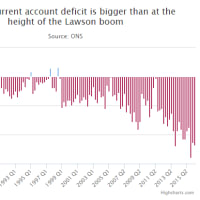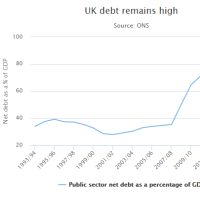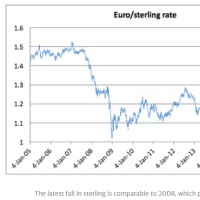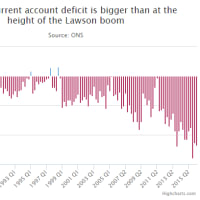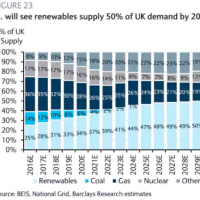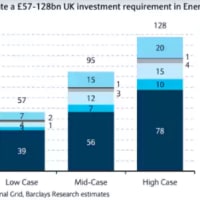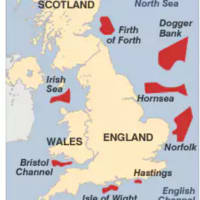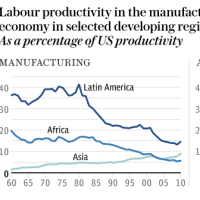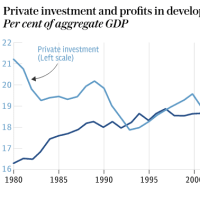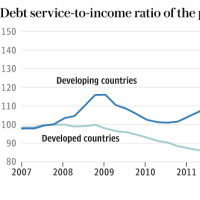Oil investment crashes to 60-year low, incubating next energy shock
(石油投資、60年ぶり最低まで激減…次のエネルギー・ショックの種を蒔く)
Ambrose Evans-Pritchard, international business editor
Telegraph: 14 SEPTEMBER 2016 • 12:01AM


(石油投資、60年ぶり最低まで激減…次のエネルギー・ショックの種を蒔く)
Ambrose Evans-Pritchard, international business editor
Telegraph: 14 SEPTEMBER 2016 • 12:01AM
Oil discoveries have slumped to the lowest level since 1952 and the global economy is becoming dangerously reliant on crude supply from political hotspots, the world's energy watchdog has warned.
石油の発見は1952年以来最低のレベルまで急激に落ち込み、世界経済は政治的ホットスポットからの原油供給に危険なほど依存するようになりつつある、と国際的なエネルギー・ウォッチドッグが警告しました。
Annual investment in oil and gas projects has fallen from $780bn to $450bn over the last two years in an unprecedented collapse, and there is no sign yet of a recovery next year.
年間の石油ガス開発投資はこの2年間で前代未聞の激減を見せ、7,800億ドルから4,500億ドルまで減少しましたが、来年も回復の兆しが全く見えません。
The International Energy Agency said wells are depleting at an average rate of 9pc annually. Drillers are not finding enough oil to replace these barrels, preparing the ground for an oil price spike in the future and raising serious questions about energy security.
IEAによれば、石油ガス井は年率9%のスピードで枯渇しつつあるそうです。
採掘業者はこの減少分を埋め合わせるだけの石油を発見しておらず、石油価格が将来急上昇する地盤を整え、エネルギーの確保について深刻な問題を提起しています。
"There is evidence that cuts in exploration activities have already resulted in a dramatic decline in new oil discoveries, dropping to levels not seen in the last 60 years," said the IEA's World Energy Investment 2016 report.
「試掘活動の削減が既に新しい油田の発見の劇的減少をもたらし、過去60年来見られなかった水準まで落ち込んだという証拠がある」とIEAの2016年度世界エネルギー投資報告書は伝えています。
The drop is so drastic that the effects are likely to overwhelm slow gains from fuel efficiency and the switch to electric cars, at least for the rest of this decade.
この減少は、燃料効率の緩やかな改善や電気自動車への切り替えなどを、少なくとも2020年までは、圧倒するほど劇的です。
Much of the steepest fall in spending is in stable political areas. Britain's North Sea investment has shrivelled to £1bn from an average of £8bn over the last five years. Spending in Canadian fields has plummeted by 62pc.
支出激減の大半は政治的に安定した地域で起こっています。
英国の北海油田に対する投資は過去5年間の平均80億ポンドから10億ポンドまで減少しました。
カナダの石油ガス田への支出も62%も激減しています。
This decline tightens the future stranglehold of the OPEC cartel and Russia on global oil supplies, although the consequences will not be obvious until it is too late. The big national oil companies in the Gulf have costs of $10 a barrel or less, and most have kept up investment.
この減少は、OPECとロシアの世界的な石油供給に対する将来の支配を強化していますが、その結果は手遅れになるまで明白にはならないでしょう。
湾岸の大手国営石油会社のコストは1バレルあたり10ドルかそれ以下であり、殆どは投資を継続しています。
Saudi Arabia seems determined to keep raising output and push for market share, even though low prices caused by its own policy are playing havoc with its public finances. The budget deficit is 16pc of GDP.
自国の政策によって生じた石油安が国の財政を滅茶苦茶にしているにも拘らず、サウジアラビアは増産とマーケットシェア獲得を継続する決意のようです。
財政赤字はGDPの16%に達しています。
It is drawing down foreign exchange reserves and tapping the global bond markets to makes end meet, a high-risk strategy but one that can probably work for another two years.
穴埋めのために外貨準備を融かし、国際債券市場に手を付けています。
これは高リスクな戦略ですが、あと2年は継続出来るでしょう。
Russia's oil industry has higher costs but it has been cushioned by a cheaper ruble. The Kremlin has an Achilles Heel, however. It is is burning through its Reserve Fund to cover a fiscal deficit, drawing down $6bn in August alone.
ロシアの石油産業のコストはもっと高いのですが、ルーブル安のおかげで緩和されています。
しかし、ロシア政府にはアキレス腱があります。
財政赤字をカバーするために準備金を融かしまくっており、8月だけでも60億ドルも減らしました。
There is only $32bn left. Russia can probably muddle through until mid-2017 but then it will face stark choices. The Saudis may calculate that they can outlast Russia in this grueling war of attrition.
残りはたったの320億ドルです。
2017年中盤まではなんとかやりくり出来るかもしれませんが、その後は厳しい選択を迫られます。
サウジアラビアは、この厳しい消耗戦でロシアに勝てると計算しているかもしれません。
The IEA said global spare capacity is wafer-thin at just 1.7m barrels a day (b/d), stripping out idle capacity in the war-torn trio of Libya, Iraq, and Nigeria. This implies that the market will swing from glut to scarcity with lightning speed once the energy cycle turns.
IEA曰く、リビア、イラク、ナイジェリアの戦争で荒廃した三ヶ国の余剰能力を除けば、世界的な余剰生産能力は170万バレル/日と極めて少ないそうです。
これはつまり、エネルギー・サイクルが変われば、市場は余剰から不足へと電光石火で切り替わるということです。
For now the world is still swimming in oil, and iron law of the oil cycle is that the longer this goes on, the greater the rise in crude prices later. Brent contracts have slipped 6pc to $47 a barrel over the last three trading sessions, giving up the short-lived gains from vague talk of an output freeze by OPEC and Russia later this month.
今のところ、世界は引き続き石油が溢れ返っていますし、石油サイクルの鉄板の掟は、これが長引くほどその後の原油価格上昇が甚だしくなると言うものです。
ブレント原油の契約は3営業日で47ドルまで6%下落し、OPECとロシアが今月中に生産を停止するとの曖昧な話によって得られた短期的な上昇分も元通りになりました。
The IEA said the oil market is behaving strangely. "With the price of oil at current levels, one would expect supply to contract and demand to grow strongly. However, the opposite now seems to be happening," it said.
IEAは石油市場は奇妙な動きをしていると言います。
「石油価格が現在のレベルであれば、供給が減少して需要が堅調に伸びることを期待するものだが、今はその逆が起こりつつあるようだ」とのこと。
Growth in global demand slumped to a two-year low of 800,000 b/d in the third quarter, upsetting the fine calculus of supply and demand. The glut is now likely to persist until mid-2017, and this will be extremely painful for Nigeria, Algeria, Angola, Venezuela, and Iraq.
世界的な需要の伸びは第3四半期に、2年ぶり最低の80万バレル/日まで落ち込み、需要と供給の繊細な計算を滅茶苦茶にしました。
石油余りは今や2017年の中頃まで続きそうであり、これはナイジェリア、アルジェリア、アンゴラ、ベネズエラ、イラクを相当苦しめるでしょう。
OPEC is still adding supply into a depressed global market. Both Iran and Saudi Arabia and have added 1m b/d each over the last two years, more than offsetting the 1.4m b/d fall in other parts of the world.
OPECは今も疲弊した国際市場への供給を増やし続けています。
イランもサウジアラビアも過去2年間、それぞれ供給を100万バレル/日増やしましたが、これは他の地域で供給を減らした分、140万バレル/日を埋め合わせておつりがくる量です。
The Iranians have lifted exports more quickly than expected to their pre-sanctions level of 2.2m b/d, though output has leveled off over the last four months . It is clear that this one-off effect is largely exhausted.
イランは輸出量を制裁前の水準(220万バレル/日)まで思いの外早く戻しましたが、生産量はこの4ヶ月間横這いになっています。
この一回限りの効果がほぼ薄れてしまったのは明白です。
The Saudis have ramped up their giant Wasit gas plant, freeing 215,000 b/d of output that was being used for power. But the bigger picture is that the Kingdom is sticking to its master plan to kill off high-cost projects in the Arctic, in African deep waters, in the Canadian oil sands, and Venezuela's Orinoco basin.
サウジアラビアは巨大なワジット・ガスプラントを強化して、動力に使われていた21.5万バレル/日を解放しました。
しかしより俯瞰的に見れば、サウジアラビアは北極圏、アフリカの深海、カナダのオイル・サンド、そしてベネズエラのオリノコ盆地での高コスト開発を潰すという当初の計画を変えていないことがわかります。
Saudi Arabia has largely given up trying to knock out the US shale industry, reluctantly accepting that it will have to live with this troublesome upstart. North America's frackers are becoming low-cost producers and are tough opponents, able to survive and thrive at $40 to $50 a barrel due to leaps in technology.
サウジアラビアは米シェール産業を潰すのをほぼギブアップして、この厄介な新興産業を不承不承認めました。
米国のフラッキング業者はテクノロジーの大発展のおかげで、40-50ドルの価格でも生き延びて繁栄出来る、低コスト生産の出来る強敵になりつつあります。
Although 90 companies have gone bankrupt since oil prices crashed, this has not stopped the juggernaut. Some have done deals with creditors, clearing debts. In other cases, private equity groups with deep pockets have scooped up the distressed assets.
石油価格暴落から90社以上が破綻しましたが、これは巨大企業を止めていません。
債権者と合意を結んで債務を清算したところもあります。
他にも、資金の潤沢なプライベート・エクイティ・グループがディストレスト資産を一掃しています。
Frackers have added 98 new rigs since May. The epicentre of fresh output is in the Permian basin of West Texas, a region that could ultimately produce 6m b/d and surpass Saudi Arabia's Ghawar field.
フラッキング業者は5月以降、98基もリグを増やしました。
新しい生産の中心はテキサス西部、パーミアン盆地で、最終的には600万バレル/日を生産してサウジアラビアのガワール油田を超えるでしょう。
The IEA said costs for shale drillers fell 30pc in 2015, and will fall a further 22pc this year. The price of completing a well has dropped by up to 65pc since 2014.
IEAは、シェールの採掘コストは2015年に30%減少し、今年は更に22%減少するとしています。
油井を完成させるためのコストも2014年に比べて65%も減少しました。
Lower costs are not confined to fracking. Spot day-rates for land rigs globally have dropped from $25,000 to $16,000. Drill ships for deepwater fields have fallen from $650,000 to $400,000 a day. This means that the actual damage from falling investment is not as bad as it looks, but it is still serious.
コストの低下はフラッキングに限ったことではありません。
ランド・リグの1日のスポット価格は世界的に、25,000ドルから16,000ドルまで減少しました。
深海油田用の掘削船も1日当たり65万ドルから40万ドルまで下落しています。
これはつまり、投資減少の実際的なダメージは見た目ほど酷くないということですが、それでもやはり深刻です。
The great question is how quickly the industry can crank up output once the market tightens. Shale drillers are nimble, but even they need one to two years to recruit expert staff, and reach full momentum, and they are not big enough to make up for cancelled mega-projects across the world.
大きな疑問は、マーケットが緊張した場合に、業界がどれほど迅速に増産出来るかということです。
シェール業者は機敏ですが、それでも専門家を採用してフル稼働するまでに1-2年はかかりますし、世界中のメガ・プロジェクトをキャンセル出来るほどの規模を持ちません。
The Saudis may ultimately win their gamble, flushing out rivals so thoroughly in a three-year purge that the ground is prepared for an unstoppable surge in crude prices later this decade.
サウジアラビアは最終的にギャンブルに勝って、3年間のパージでライバルを徹底的に駆逐して2020年までに止めようのない原油高騰が起こる素地を創り上げるかもしれません。
But if that reminds the world that oil is a highly volatile commodity controlled by political cartels, it may trigger the final and definitive push for home-grown renewable energy. Such are Pyrrhic victories.
しかし、それが石油は政治的カルテルにコントロールされている極めてボラティリティの高いコモディティだ、ということを世界にリマインドすれば、再生可能エネルギーの自給への決定的な動きを引き起こす可能性があります。
それは犠牲が多くて引き合わない勝利というものです。














